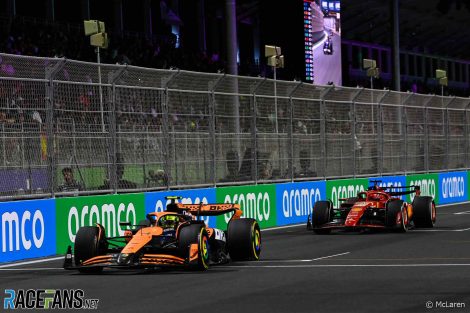Three years into Formula 1’s overhaul of its technical regulations, which was intended to create closer racing and easier overtaking, the series is no closer to ending its dependence on the Drag Reduction System.
It was introduced in 2011, just two years after another shake-up of the aerodynamic rules which was also intended to aid passing. Once thought of as a short-term sticking plaster, after 14 years and two more aerodynamic overhauls (one of which, in 2017, clearly made passing much more difficult) F1 hasn’t been able to wean itself off push-button passing.
Many of those watching would like to see it kick the habit, and so do some of those in charge. When the latest regulations change arrived in 2022 the FIA’s head of aerodynamics Jason Somerville said “we’d very much like to phase out DRS if we can.” But F1 now seems more reliant on DRS than before, not less.
Formula 1 chief technical officer Pat Symonds insists the latest rules are a triumph. “We set certain objectives when we did the ’22 car, one of them was for the cars to be able to follow each other closely,” he told the official F1 website recently.
“And we certainly achieved that, we achieved it, actually, probably better than I ever expected we would do.”
Yet F1’s alterations to the DRS rules over the past three seasons indicates it’s not the new-shape cars which is helping drivers pass but the same old sticking-plaster solution.
After the first season with the new cars the FIA experimented with shortening F1’s DRS zones at some tracks over the opening races of 2023. But drivers complained that made overtaking too hard and the zones were left unchanged for later rounds.
Advert | Become a RaceFans supporter and
For this year the DRS regulations have been relaxed. Previously drivers could not start using DRS until two laps after the start. This has now been reduced to a single lap.
The result of this is overtaking has often become a foregone conclusion. At most circuits drivers know that if a rival is gaining on them quickly enough, usually due to a difference in tyre age, then trying to defend a position is a waste of time.
If what fans want to see is exciting dices for position and thrilling overtaking moves, DRS is doing more harm than good. For years it was believed DRS could be tuned to create close racing rather than slam-dunk passes. But the reality is there are too many variables to…
Click Here to Read the Full Original Article at RaceFans…

